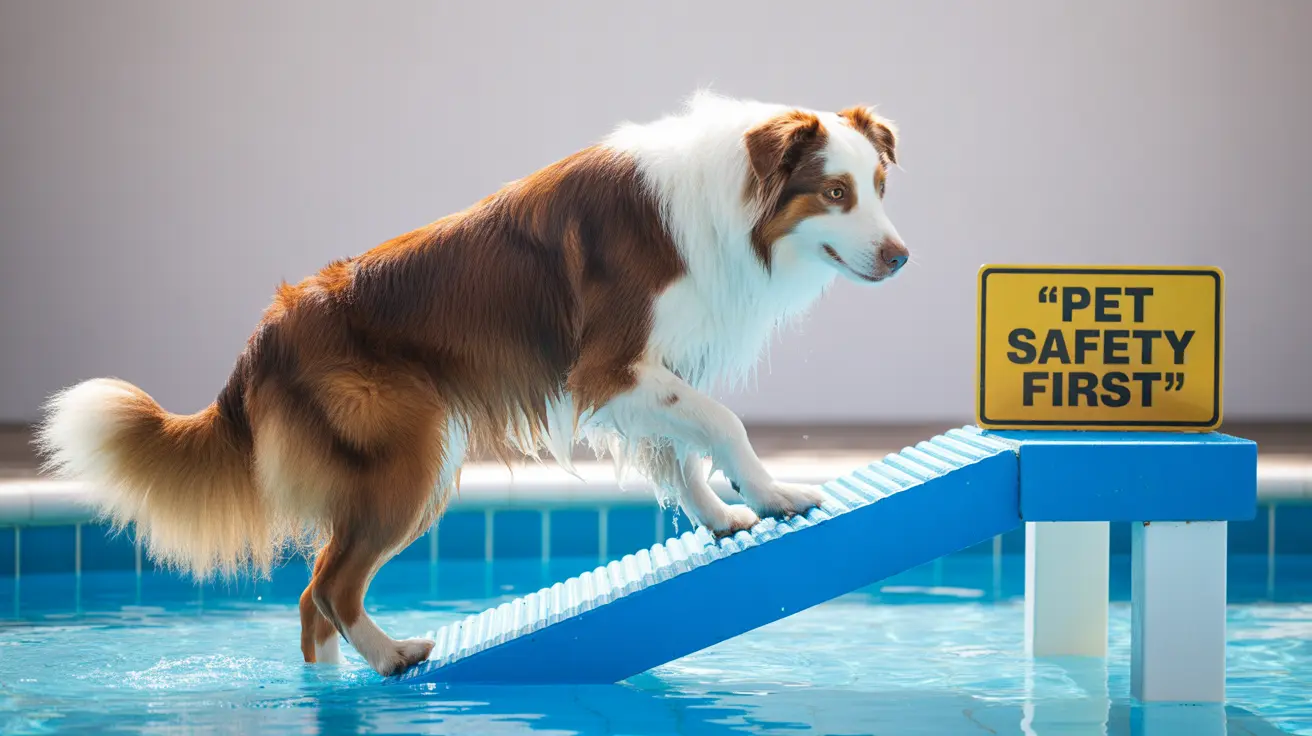Why Your Pool Needs a Dog Ramp
Unlike humans, dogs cannot use traditional pool ladders effectively, and many struggle to pull themselves out of the water using the pool's edge. This limitation can lead to exhaustion and, in worst-case scenarios, drowning. Statistics show that countless pets face accidents in backyard pools annually, making proper safety equipment essential.
Essential Features of an Effective Dog Pool Ramp
Non-Slip Surface Technology
The most crucial feature of any dog pool ramp is its surface texture. High-quality ramps incorporate specialized non-slip materials, often featuring ridged or textured surfaces that provide secure footing even when wet. This feature is particularly important for older dogs or those with mobility issues.
Proper Incline and Support
A gentle slope is critical for easy access. The best ramps maintain an angle of approximately 20-30 degrees, making it comfortable for dogs of all sizes and abilities to enter and exit the pool. The ramp should also be sturdy enough to support your dog's weight without wobbling or flexing.
Commercial vs. DIY Pool Ramps
Commercial Options
- Engineered specifically for pool use
- Weather-resistant materials
- Tested weight capacity
- Built-in safety features
- Professional warranty coverage
DIY Considerations
- Material durability in water
- Structural integrity
- Non-slip surface application
- Installation security
- Long-term maintenance requirements
Installation and Placement Tips
- Securely anchored to the pool deck
- Positioned away from pool features
- Easily visible to your dog
- Accessible from multiple angles
Training Your Dog to Use the Pool Ramp
- Introduce the ramp on dry land first
- Use positive reinforcement with treats
- Practice with the ramp in shallow water
- Gradually progress to deeper water
- Always supervise initial uses
Maintenance and Safety Checks
- Clean the surface weekly to prevent algae growth
- Check attachments and hardware monthly
- Inspect for wear and tear before each use
- Store properly during off-season periods
Frequently Asked Questions
How do I choose the best dog ramp for my pool to ensure safety and easy use for my dog?
Select a ramp with a non-slip surface, appropriate weight capacity for your dog, and proper length for your pool depth. Consider your dog's size, age, and any physical limitations when choosing the incline angle.
What are the key features to look for in a commercial dog pool ramp vs. a DIY option?
Commercial ramps typically offer superior durability, tested safety features, and professional-grade materials. DIY options require careful material selection, proper waterproofing, and regular maintenance to ensure safety.
How can I train my dog to use a pool ramp safely and confidently?
Use positive reinforcement techniques, starting with the ramp on dry land. Gradually introduce water, rewarding your dog for successful attempts. Never force your dog onto the ramp; let them build confidence naturally.
Are dog pool ramps suitable for elderly or disabled dogs with joint issues?
Yes, pool ramps are especially beneficial for elderly or disabled dogs. Look for models with gentle slopes, wide platforms, and excellent traction to accommodate their specific needs.
What maintenance is required to keep a dog pool ramp safe and durable over time?
Regular cleaning, inspection of attachment points, surface maintenance, and proper storage during off-seasons are essential. Check for wear and tear frequently, and replace any damaged components immediately.
Conclusion
A dog ramp for pool access is more than just a convenience—it's a crucial safety investment for any pet owner with a swimming pool. By choosing the right ramp, installing it properly, and training your dog to use it effectively, you can ensure your furry friend enjoys safe access to pool activities for years to come.






